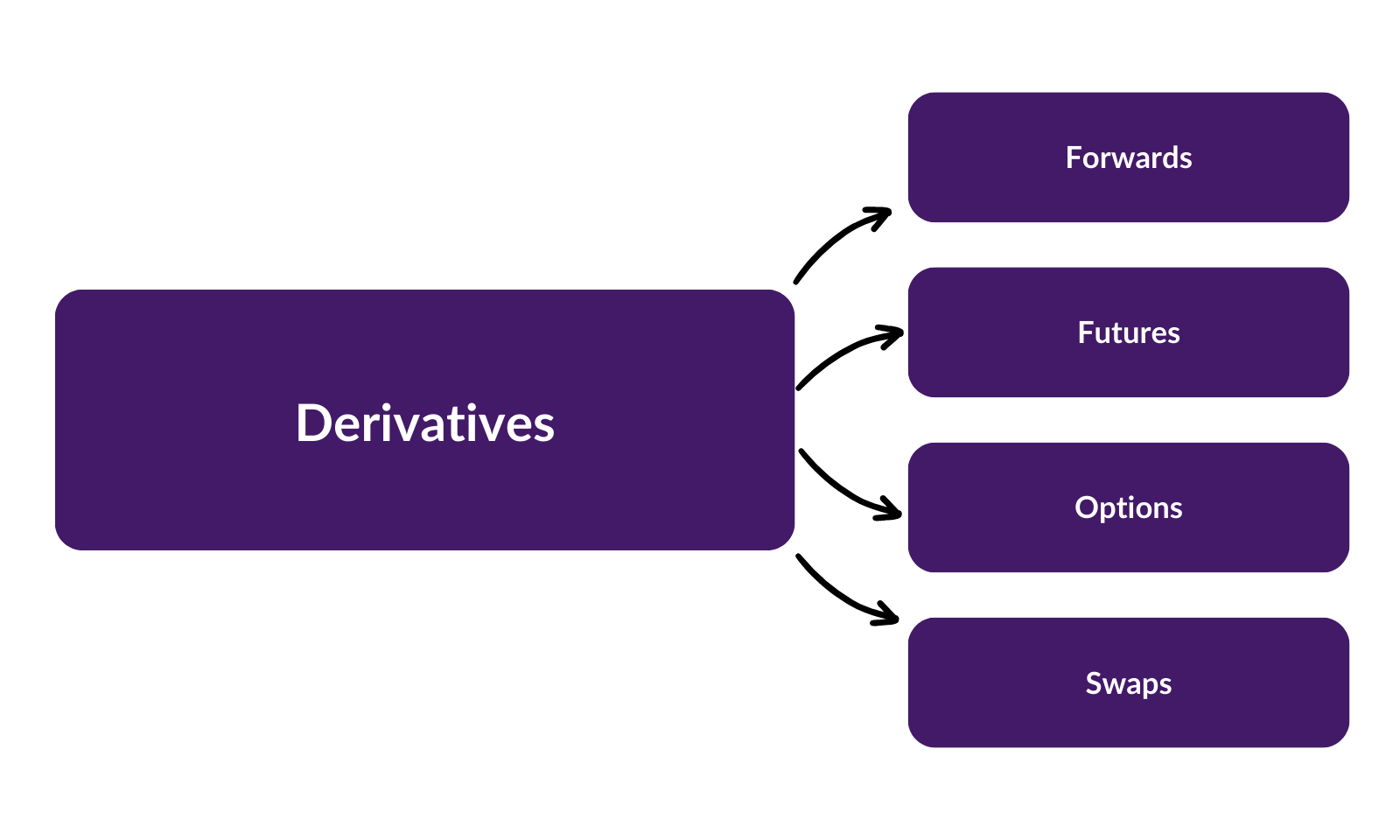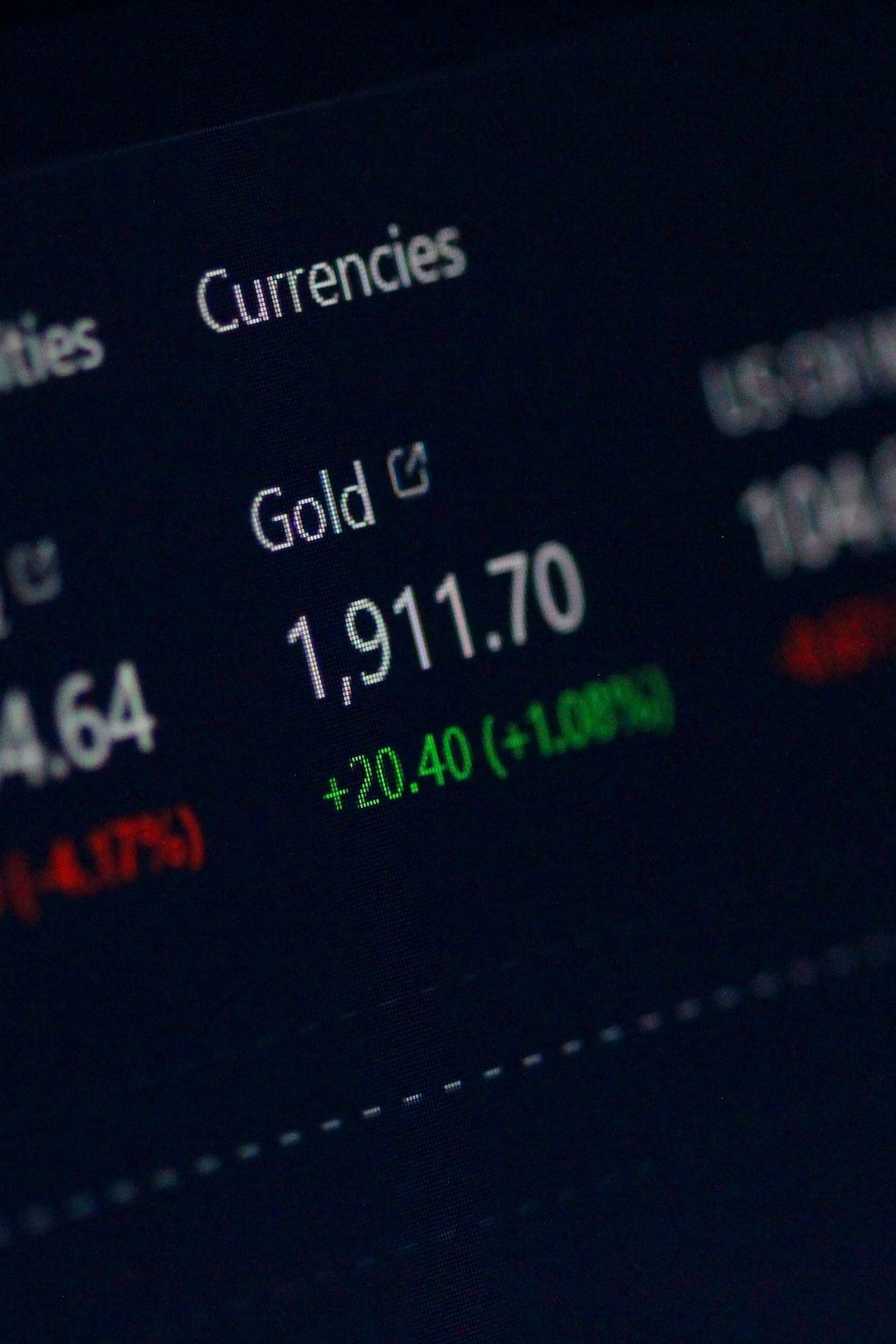Derivatives, Swaps and Options: A Guide
Derivatives are financial contracts that derive their value from an underlying asset or index – in fact, anything that has an objective, independent measure of value. They have become essential tools in corporate finance and risk management. Swaps, forwards, futures and options are common types of derivatives used by companies to hedge risks, but can also be used by traders to speculate on asset prices. This article provides an introduction to derivatives, swaps, and options, explaining key concepts and formulas used in valuing and applying these important financial instruments.

Article Contents
Key Takeaways
| Aspect | Description | Types | Key Formulas/Concept |
| Derivatives | Financial instruments deriving value from an underlying asset, used for hedging risks and speculation. | Futures, Options, Swaps, Forward Contracts | Derivative is a generic term that applies to all types of financial contracts that derive their value from some ‘underlying’ asset, index or event. |
| Options | Give the holder the right, but not the obligation, to buy/sell the underlying asset at a specified price. | Call Options, Put Options | Black Scholes, Binomial Option Pricing |
| Swaps | Contracts where two parties exchange financial instruments or payments. | Interest Rate, Currency, Commodity, Equity, Credit Default Swaps | Present value of future cash flows exchanged |
| Forwards | Agreements to buy/sell an asset at a future date for an agreed price, not traded on exchanges. | Currency Forwards, Commodity Forwards | Forward price = Spot price x (1 + interest rate) ^ time |
| Futures | Contracts to buy/sell an asset at a future date and price, traded on exchanges. | Commodity Futures | Mark-to-market based on daily settlement price |
What are Derivatives?
As mentioned, derivatives are contracts that derive their value from the performance of an underlying financial asset, index, or other investment. Companies use derivatives to hedge risks and/or enhance returns, while speculators also trade derivatives to profit from price movements in the underlying asset – without having to purchase the underlying asset, and with the use of leverage. The value of a derivative contract is driven by the price of the underlying asset.
Some key features of derivatives:
- Derivative value is dependent on an underlying asset
- They are simply a contract between two parties where the settlement is driven by the price level of the underlying (reference) asset
- They can be traded over-the-counter (tailor-made) or on exchanges (standardised contracts)
- Used for speculation and hedging by traders, investors and companies
Initial investment requirements for derivatives can vary. For instance, options often require a premium to be paid upfront, reflecting the cost of acquiring the right represented by the option. In contrast, some swaps might not necessitate an upfront payment, as their value is derived from the mutual obligations of the parties involved.
Types of Derivatives
Forwards
A forward contract is the simplest of derivatives to explain and the best place to start. It is an ‘over-the-counter’ agreement between two parties to fix the price upfront to buy or sell an asset at a specified future date. Forwards are negotiated between the parties ‘over the counter’ meaning there is no standardisation or the contracts – the terms are whatever is negotiated.
Forwards allow companies and investors to lock in prices and manage cash flow risks, but they can be used to speculate on price movements too. The most common forward contract – and the single biggest (by trading volume) derivative is the currency forward – used to trade / hedge currency prices i.e. exchange rates.
The simplest way to see how they work is by giving an illustration:
- Take a company that is earning revenue in USD, but it wants to convert this into GBP – the company is concerned about GBP/USD volatility.
- Say it is now January, and USD 20,000 of cash is expected to be received in June. The spot price for GBP/USD is $1.30/£1.
- The company can speak to its currency broker or bank and agree to fix the price now (in January) for a currency conversion later in the year, July for example.
- Assume the broker quotes a price of $1.32/£1. By making the contract settlement date July, rather than June, this allows the company a bit of extra time in case the USD are received later than expected.
- When it comes to July, the exchange rate might be $1.50, $1.20, or anything else, but the company will convert at the agreed rate of $1.32, thus eliminating any currency price risk. The company knows it will receive $20,000 / 1.32 = £15,151
Note that the company isn’t trying to make a gain in doing this transaction – it’s not about speculation. The motivation is purely to eliminate market price risk.
Because the agreed rate might be less favourable than the market price turns out to be, the brokers will ask the company to pay a deposit, or ‘margin’ upfront, typically 5-10% of the contract value. Large corporates will often have credit lines with banks that mean they don’t have to pay the margin – but the bank will be taking on the risk of the company defaulting.
Futures
Futures are similar to forward contracts, but they are standardized contracts traded on regulated exchanges. Large companies commonly use commodity futures to hedge input costs, while investors speculate on price changes in the underlying asset to make a profit. For example, an airline operator may buy an oil futures contract to hedge the price of jet fuel (jet fuel prices are strongly correlated to the price of oil)
The way that these futures work is that the buyer (the airline operator) doesn’t actually want to take delivery of the oil, so it ‘closes out’ the trade at a later date by selling the contact back via the exchange, cancelling out its purchase obligation. If the price has risen, the airline operator will receive the price difference as cash. This ‘profit’ can be used to reduce the cost of its jet fuel, which is strongly correlated to oil prices.
Options
Options are slightly more flexible than forwards or futures as they give the holder the right, but not the obligation, to buy (or sell) the underlying asset at a fixed price at a later date.
The option to buy is called a ‘Call Option’, whilst the right to sell is called a ‘Put Option’.
This optionality essentially means the company buying the option has the choice to either take the pre-agreed fixed price under the option agreement, or just walk away (‘abandon’ the option) and transact at the current market price, which might be more favourable. This flexibility doesn’t come for free – and buyers of options have to pay a premium upfront, like you would with an insurance contract.
The leverage effect in options is a significant aspect of their appeal and risk. A relatively small investment in the option’s premium can control a much larger value of the underlying asset. This leverage amplifies potential gains, but it also increases potential losses, making options a high-risk, high-reward investment.
Swaps
Swaps are analogous to a series of forward contracts, extending over a longer time period. Forwards will have settlement dates going out not more than around 12 months, but Swaps can have lives of 20-30 years. Having said that, they are most commonly used to hedge interest rate risk on loans which have lives of 3-5 years. Other swaps include currency swaps, commodity swaps, equity swaps, and credit default swaps. Swaps allow companies to hedge different types of longer-term risks.
Formulas for Calculating Derivatives
There are various formulas used to price different types of derivatives. But even the term ‘price’ needs clarifying. For a forward, future or swap, the price is the pre-agreed fixed rate quoted by the bank or their broker. Howeverm the ‘price’ of an option is the up-front premium to be paid to have the option to buy the underlying at the fixed rate. Slightly different. The key factors are:
Some key derivative pricing formulas:
- Forwards – no ‘upfront premium’ on a forward, price is simply the pre-agreed price for future delivery
- This price is driven by
- The Spot (current) price
- Cost of borrowing
- Cost of storage
- Any income yield on the underlying asset
- Price enhancements to provide income to the broker
- This price is driven by
- Options – pricing involves risk modelling
- In addition to the factors noted above for determining a forward price, we are now trying to calculate the value of having the option to settle at the forward price, and this involves uncertainty – i..e we need to model risk. So, it’s not quite as simple to price.
- The volatility of the underlying asset drives the premium to be paid for optionality. This idea is no different to pricing an insurance contract – the more volatile your driving, the higher the premium for your car insurance!
- Various options pricing models exist – you will probably have heard of the Black-Scholes model, or a binomial model used to value stock and index options.
- Swaps – Present value of future cash flows exchanged between parties
- In valuing swaps, the specific formulas and approaches used can vary significantly based on the type of swap. For example, in an interest rate swap, the calculation involves estimating the present value of future cash flows based on interest rate forwards, or interest rates implied within bond prices. In contrast, commodity swaps would require an assessment of future commodity prices. Each type of swap necessitates a tailored approach to valuation
Interpreting Derivatives in Finance
Companies use derivatives like swaps, futures, and options to hedge risks as part of their risk management strategy. For example, an airline may utilize oil futures to lock in fuel costs and hedge against rising oil prices. A software firm could purchase currency put options to limit exchange rate risk.
Speculators aim to profit from derivatives trading based on their view of market movements. For instance, a fund manager may buy S&P 500 index call options in anticipation of rising stock prices. Swap rates can provide insight into market expectations of risks.
On the balance sheet, derivatives are presented at their fair value. Positive fair values are financial assets while negative values are financial liabilities. Fair values of derivatives fluctuate based on related market risks, and this can affect earnings. Companies must also meet regulatory requirements for reporting derivative instruments.
Leverage in Derivatives
Leverage refers to the situation where the amount of capital required to trade a derivative contract is less than the market exposure it gives. For example, using our currency hedging example from earlier, where the company was expecting to receive $20,000.
- The forward contract only requires a margin of around 5% to be paid to the broker – $1,000.
- With this $1,000 payment, the company has locked into a contract with a value of $20,000 and has full exposure to currency movements of this value. That’s leverage.
- If the $20,000 are never received, the exposure is still there.
Risk Management Strategies Using Derivatives
Derivatives are powerful tools for risk management. Companies often use them to hedge against various risks, such as currency fluctuations, interest rate changes, and commodity price volatility, as already explained. For example, an importer might use currency forwards to hedge against the risk of currency depreciation. Understanding how to strategically use derivatives for risk management is key for corporate finance professionals.
Misuse of derivatives for hedging has cost of lot of money to companies in the past – have a quick search for Metallgesellschaft and see for yourself! Derivatives are not ‘dangerous’ in themselves unless they are in the hands of people who don’t understand them. The issue with using derivatives is that although they may hedge market price risk effectively, they can give exposure to other types of risk – notably liquidity and counterparty risk.
Regulatory Aspects of Derivatives
The regulatory landscape for derivatives has evolved significantly, especially following the financial crisis of 2008. Regulations now focus more on transparency, reporting requirements, and reducing systemic risk. This includes the mandatory clearing of certain derivative contracts through central counterparties (to address counterparty risk and to help with centralised data) and reporting trades to trade repositories. Staying abreast of these regulatory changes is vital for companies and investors involved in the derivatives market.
Exercises and Examples for Analysing Derivatives
Let’s look at some exercises and examples to understand how derivatives like swaps, futures, and options work:
Exercise 1
Futures Contract – A company enters into a futures contract to buy 10,000 barrels of oil for $80 per unit in 6 months. It plans on buying the equivalent volume in jet-fuel in 6 months time and the current price of Jet Fuel is $100/bl. When it comes to closing the futures contract, the price on the same contract has risen to $93/bl and Jet Fuel has risen to $119. What is the net settlement on the forward contract, and if applied to the Jet Fuel purchase, what is the net cost of the jet fuel?
Solution
Under the forward contract:
- Purchase price is $80
- Closing price is $93
- Gain is $13/bl
For the jet fuel, the cash price turns out to be $119/bl, but the company has gained $13/bl on the futures contract, so it’s net cost is only $106/bl equivalent. It didn’t manage to fully hedge the price increase in Jet Fuel, but remember there are other factors to consider. Most significantly, the company used Oil futures to hedge the price of Jet Fuel – known as a ‘proxy’ hedge. Jet Fuel futures are not so accessible in the market and Oil is considered to be a good proxy (due strong correlation in price movements). Although a strong correlation, the prices are not the same!
Exercise 2
Option Payoff – An option to buy Stock XYZ has a strike price of $25. This is the fixed, agreed purchase price the option holder can buy the stock at. What are the possible payoffs at expiration if XYZ is trading at $20 and $30? The payoffs are the gain to the option holder. If there is not gain, they will not exercise their option and the payoff is zero!
Solution
If XYZ = $20, then option to buy the stock at $25 is worthless. The payoff would be zero.
If XYZ = $30; then the option to buy the stock at $25 has some intrinsic value – buying an asset worth $30 for only $25 means $5 of value. This $5 would be the pay-off under the option. This is an example of ‘cash settlement’ where rather than delivering the stock (worth $30), the option seller can just settle the difference between the stock value and the agreed price. $30-$25 = payoff $5.
Derivatives are invaluable but complex tools in current finance markets. Options, swaps, forwards and futures allow companies to hedge risks and enhance returns but only with informed usage. In the hands of the ignorant, they can be “financial weapons of mass destruction” (quote Warren Buffett). Just ask Robert Citron, Treasurer of Orange County, California! If you speak any French whatsoever, you’ll see the immediate irony there, but it’s true!
Speculators aim to profit from derivative trades based on market views. By understanding key concepts, valuation models, and risk interpretations, both corporate finance officers and investors can effectively leverage derivatives, like futures, swaps and options, in line with their objectives.

